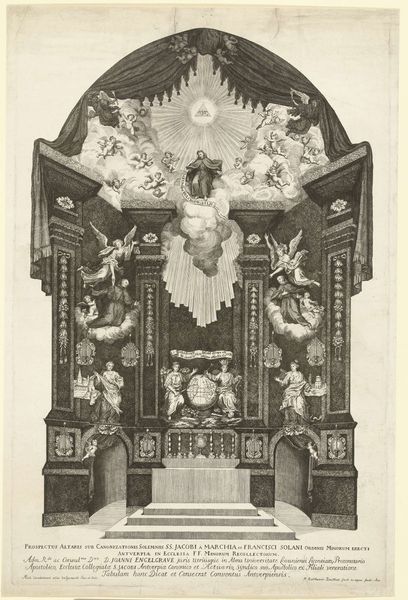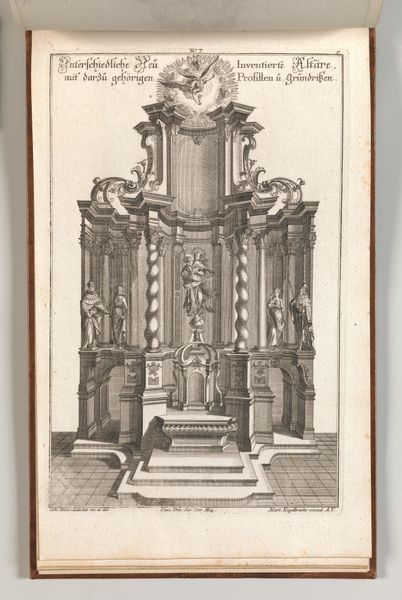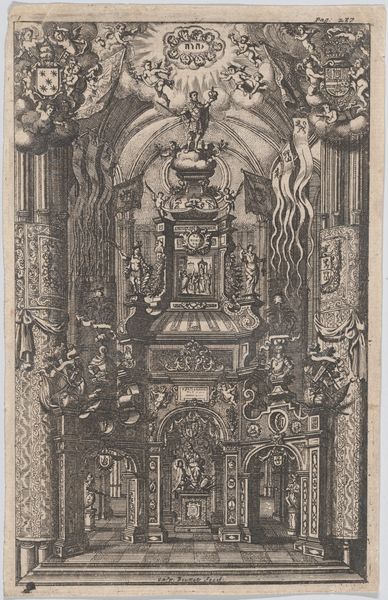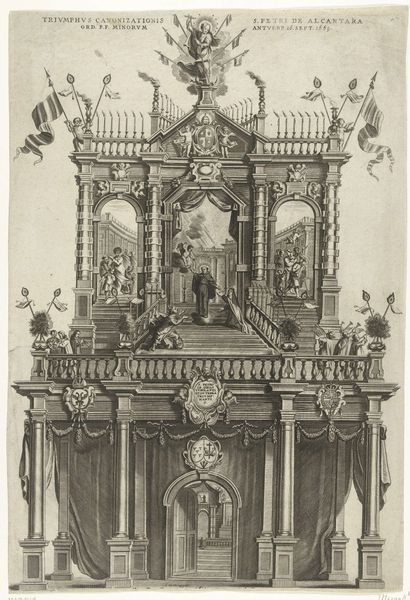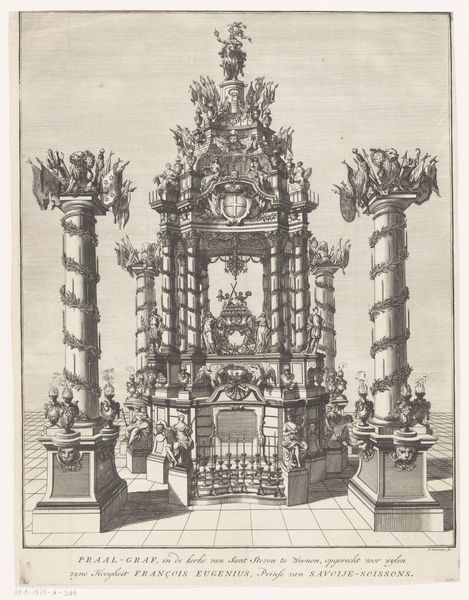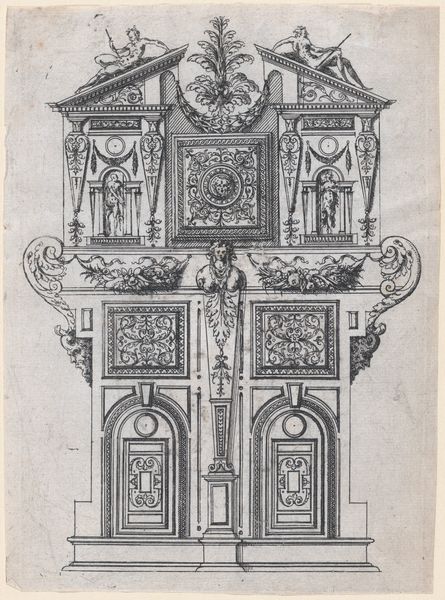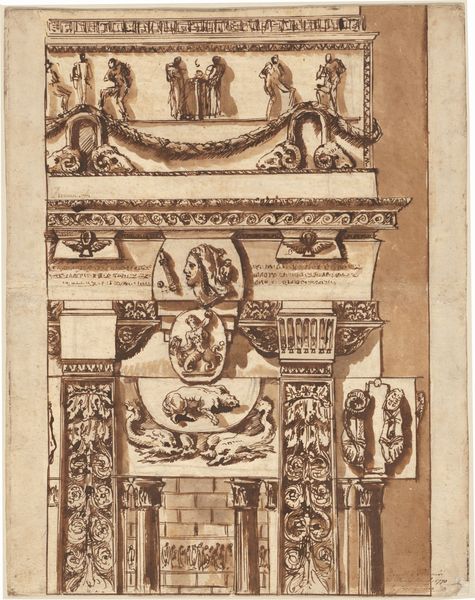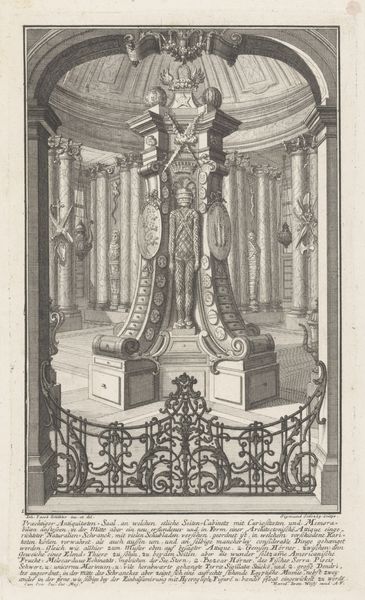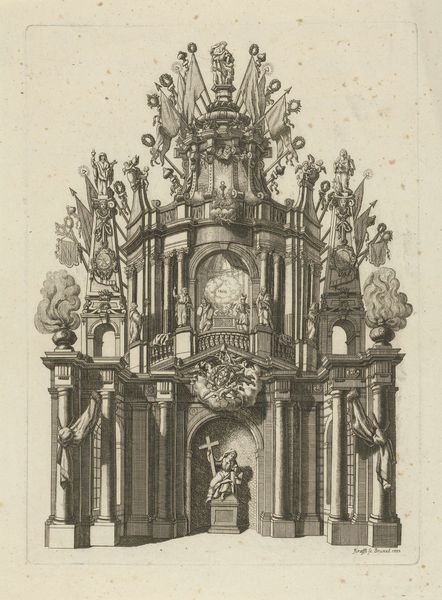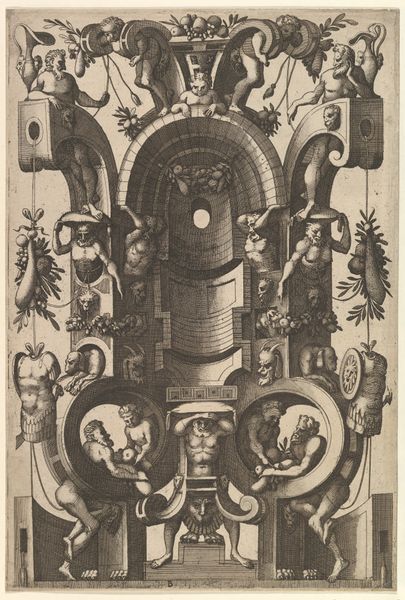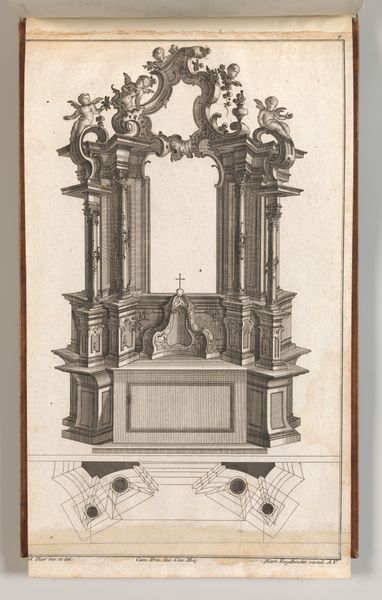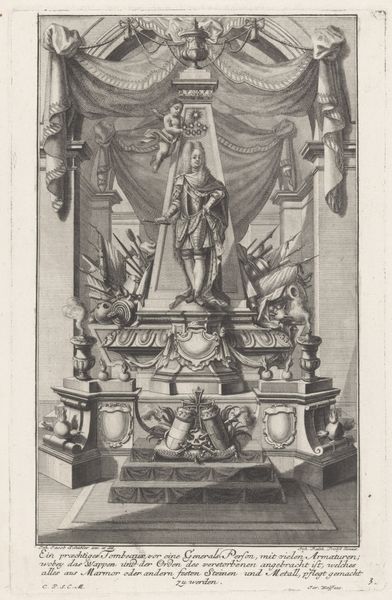
Broadsheet in Commemoration of the 200th Anniversary of the Augsburg Confession of 1530 1725 - 1735
0:00
0:00
drawing, print, engraving, architecture
#
drawing
#
baroque
# print
#
engraving
#
architecture
Dimensions: Sheet: 33 1/4 × 13 11/16 in. (84.5 × 34.8 cm)
Copyright: Public Domain
Editor: Here we have Johann Gottfried Boeck's "Broadsheet in Commemoration of the 200th Anniversary of the Augsburg Confession of 1530," created sometime between 1725 and 1735. It's an engraving, quite intricate, and has a definite architectural quality. It seems to be referencing a very specific moment in religious history. What are your thoughts on its public and cultural relevance, looking at it today? Curator: The piece serves as a powerful artifact of early 18th-century religious and political identity in Augsburg. Commemorative broadsheets like these weren't merely artistic expressions; they were strategic visual tools meant to reinforce and disseminate specific ideologies. Considering it's made almost 200 years after the actual Confession, what do you think this says about the staying power of that moment and its continued importance to the Augsburg community? Editor: That's a good point. The continued commemoration suggests the Augsburg Confession remained central to their identity. I suppose these prints helped solidify their collective memory, framing it in a specific way? Curator: Exactly. Prints, widely disseminated, played a crucial role in shaping public opinion and reinforcing communal narratives. Note the use of architectural elements - columns, arches, tiers – that add to the imposing quality, and frame smaller, narrative scenes. How do these structural devices and smaller scenes contribute to the print’s message and its reception? Editor: The architecture makes it feel authoritative, almost like a sacred space. And with its visual narratives, people probably easily understood it without much formal education at the time. It's quite different from the elite art usually found in museums! Curator: Precisely. It underscores that art always participates in public discourse, shaping communal identities and serving political or ideological functions. Remember, historical context shapes reception. The Metropolitan’s owning this artwork positions it differently, no? Editor: Definitely. Here, it sparks dialogue about art, history, and public memory, instead of solidifying religious and social ideas. That's a fascinating point about museums. Thanks! Curator: My pleasure! Always keep asking those critical questions about art's relationship to society and power.
Comments
No comments
Be the first to comment and join the conversation on the ultimate creative platform.

